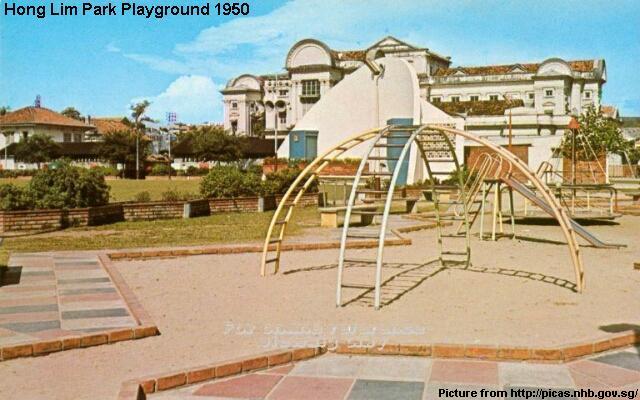The young never had it so good. There is a widely held view that Singapore’s youth has grown up in sheltered, comfortable environments and enjoy high standards of living – a far cry from the struggles and hardship that the older generations had to overcome. While this view is not an unreasonable one, we must also consider the fact that youths today face challenges in a world that is becoming increasingly uncertain. The prevailing set of challenges in the political, economic and social domains may be radically different from those in the past, but they are no less daunting and pernicious. It would be superfluous to agree that young people in Singapore lead easier lives than ever before.
Proponents of the view that young people have never had it so good until today point to the abundant education opportunities made available to youths today. It is undoubtedly true that compared to past generations, youth enjoy far greater access to learning in today’s day and age. In Singapore’s context, the government has gradually introduced a greater number of education bursaries and scholarships offered to students from less-privileged backgrounds to ensure that the education system remains a meritocratic one that rewards those who work hard, while not denying access to those who may not afford education. This is a vast improvement from the past where it was not uncommon for young people to skip school because of the need to stay at home to look after their siblings or to work in order to contribute to the monthly household income. In recent years, the government has created diverse education routes and pathways. The musically or artistically inclined can now choose to pursue their secondary education in the School of the Arts (SOTA), while budding athletes can opt to enrol in the Singapore Sports School. In this sense, today’s education landscape in Singapore has made life for young people much more accessible and empowering. If strictly measured by this yardstick, then we can say that young people never had it so good.
Apart from better education opportunities, young people in Singapore today enjoy higher standards of living compared to the generations that came before them. Rapid urbanisation and modernisation in the last few decades have witnessed attap-roof houses and family farms being replaced with high-rise flats, high-technology buildings and manicured streets lined with trees that are regularly pruned to prevent overgrowth. While communal public toilets, non-air-conditioned buses and potholes on muddy roads form a bulk of the memories of many older generations in Singapore, many Singaporean youth today cannot imagine sleeping without air-conditioning or deprived of the many creature comforts they have now. Many, as such, view the young people today as a mollycoddled bunch who are unable to survive physical hardship and discomfort. In addition to increased standards of living, the increase in spending on luxury and branded items amongst the young in Singapore today lead many to regard this as evidence that youth today have a much easier life as compared to before.
However, when one takes into account the circumstances and the new set of challenges that our young people have to face, the perspective that young people never had it so good before appears one-dimensional. In the economic sphere, the vicissitudes of what has been termed the ‘roller-coaster global economy’ has led to much fear and anxiety over jobs, inflation and economic uncertainty. The oldest millennials born in 1981 would have entered the workforce at a time when the global economy was suffering from an unprecedented collapse of the financial sector, and research by the Federal Reserve Bank of St Louis go as far as to suggest that these millennials might be unable to accumulate sufficient wealth for retirement. Younger millennials born in the 1990s and 2000s have to contend with economic uncertainties like the US-China trade war, the implications of climate change on supply chains, and rapid unprecedented rates of technological disruption to traditional industries. This is a vast contrast to the situation in Singapore’s early days of economic development in the 1960s and 1970s which saw the creation of large numbers of jobs in the rapidly growing manufacturing industry, and strong and sustained economic growth rates. Young people in Singapore today thus face greater pressure to remain competitive and employable, contrary to the perception that they lead smooth-sailing lives with their whole lives charted out for them. From an economic perspective, young people today never had it so good.
Additionally, while young people today are generally more educated than past generations, the overall increase in education standards means that there are greater expectations to do well academically and it is even more difficult for one to stand out amongst a sea of university students, especially when 4 in 10 Singaporean youth will eventually be degree holders. Moreover, the influx of foreign talents in recent years has raised the bar for many graduates, making it more competitive in getting jobs. As a result, young people, despite being given more education opportunities, now face greater difficulty in getting their desired jobs, and often have to make do with jobs that do not match their qualifications or aspirations. A recent research study conducted by the Lee Kuan Yew School of Public Policy and the Ong Teng Cheong Labour Leadership Institute suggest a pernicious, worrying underbelly of underemployed millennial graduates, some of whom are earning less than $2,000 a month from their full-time jobs despite their education qualifications. This suggests that young people in Singapore may not necessarily be better off compared to past generations when we take into consideration the increasingly competitive and uncertain job landscape in which they have to survive and thrive in today.
In our world which is increasingly fraught with fear, insecurity and uncertainty, the young are living in a Singapore that is beset with novel challenges that previous generations did not have to grapple with. As the famous historian R G Collingwood once said, “every new generation must rewrite history in its own way”. In this light, when assessing this or any generation, both the positive and the challenging aspects must be taken into account. Therefore, notwithstanding the better education or job opportunities available to this generation, it would be inaccurate to say that the young in Singapore never had it good if we understand also the myriad issues surrounding today’s generation.





